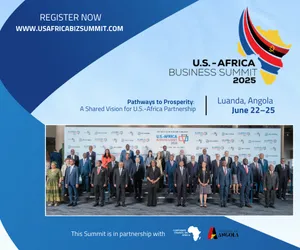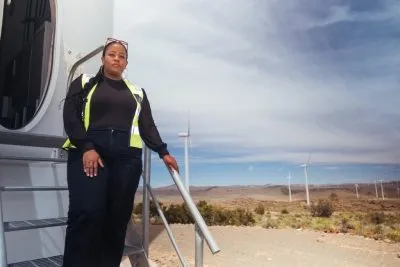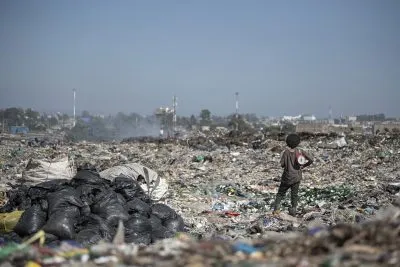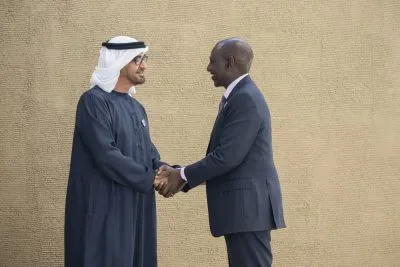The recovery in commodity prices has already had an impact in reawakening slumbering mining projects.
Halted developments are being restarted and new railways are to be built to transport mine output. The biggest increase in mining railway capacity in Africa is being made in Mozambique, where three lines are either being built or upgraded in order to allow the export of coal from Tete Province in the northwest of the country via the Indian Ocean ports of Nacala and Beira.
In June 2016, the government announced $3bn of new private sector investment in the Nacala line as a result of an agreement with the Northern Development Corridor (CDN) and the Nacala Integrated Logistics Corridor (CLN). CLN and CDN are owned by logistics and mining companies, including state-owned Portos e Caminhos de Ferro de Moçambique (CFM).
The Nacala line runs from Tete through Malawi to Nacala and currently has handling capacity of 22m tonnes a year. “The agreement does not create any financial obligation on the government,” health minister Mouzinho Saide told reporters, “since the risks of the logistics operation will be the responsibility of the leasing consortium and its components, notably Vale and Mitsui.”
New rail links for Botswana
Botswana has been in an even more difficult position than Mozambique through its lack of transport capacity. Despite government ambitions to produce 100m tonnes of coal a year, the landlocked country has lacked an export railway to either Mozambican or Namibian ports, while there was a lack of coal-carrying capacity on the existing line to South Africa.
However, in September, the governments of Botswana, Mozambique and Zimbabwe signed a deal to build a new coal export railway from Francistown in Botswana to a proposed new coal port at Techobanine in southern Mozambique, passing through Zimbabwe en route. Each government agreed to invest $200m in the project, but the lion’s share of investment will be provided by the private sector.
A consortium led by China Harbour Engineering Company, Transnet and Bela Vista Holdings are to develop the infrastructure. It remains to be seen what impact the venture will have on the rival Trans-Kalahari Railway that would connect Botswana’s coal fields to Walvis Bay in Namibia.
Walvis Bay Bulk Terminal, which is operated by South African transport conglomerate Grindrod, could handle Botswanan coal exports on the west coast. Grindrod has received some good news in its home country, with Transnet’s decision to offer the same rail tariffs to Grindrod’s customers as to those of Richards Bay Coal Terminal (RBCT).
Grindrod owns and operates the Navitrade terminal at Richards Bay, the handling capacity of which is being expanded from 2m tonnes a year to 6m tonnes a year in the short term and 20m tonnes a year in the long term, offering additional export capacity for South African coal miners. Exporters using Navitrade will pay R150 ($11) a tonne, a big drop on the previous rate of R280 a tonne.
However, Navitrade’s current handling charges are still believed to be more expensive than those offered by RBCT. The chief executive of Grindrod, Alan Olivier, commented: “We don’t know what the costs of the RBCT are but it’s owned by the majors and they are working off an extremely low sunk cost. We probably cannot compete with that but our terminal is operating as efficiently as it can and the supply/logistics chain is operating very cost efficiently.”
Transnet appears to have ended plans for its own coal terminal at Richards Bay, probably in response to Grindrod’s own ambitions. However, it increased the number of coal-carrying trains that it runs to Matola Coal Terminal at the Port of Maputo from five to 20 last year.
New hope for Central African mining
Prior to the commodity price crash, Central Africa was on track to becoming an important new source of global iron ore supply. The lack of transport capacity has previously held back the exploitation of reserves in Gabon, Congo-Brazzaville and Cameroon but railways were planned that would bring a new source of export revenue for a region that is overly dependent on oil.
The falls in demand and prices saw development shelved but the 2016 recovery looks like it could put a string of projects back on track. Congo Mining Exploration, an offshoot of Equatorial Resources, has submitted a mining licence for its Badondo iron ore scheme in northwest Congo-Brazzaville and announced plans to invest $1.2bn in a venture that it describes as a “monster”.
Mine development is due to begin this year, with output eventually expected to reach 40m tonnes a year. Congo Mining Exploration’s chief executive, John Welborn, said: “The recent improvement in the price of iron ore makes Equatorial confident that it will find the necessary financing to develop the mine.”
While it should be easier to transport iron ore from the Mayoko-Moussondji project in Congo-Brazzaville, the Belinga, Mbarga and Mbalam Nabeba mines will all require new rail connections. It will be interesting to see how much cooperation there is between mining firms over sharing infrastructure, particularly with regard to cross-border rail links in a remote region.
Gabonese rail company Société d’Exploitation du Transgabonais (SETRAG) has already secured €85m ($91m) in financing to double capacity on the main railway in the country, the 650km line between Libreville and Franceville. The International Finance Corporation (IFC) has agreed to provide €52.5m and Agence Française de Développement €32.5m.
This could act as the main trunk line for both iron ore and manganese exports in the region. The IFC’s regional director for West and Central Africa, Vera Songwe, said: “This project will support efficient transport solutions by private sector operators for mining companies and general freight shippers, thus facilitating industrial investment and economic growth in Gabon.
Australia’s Sundance Resources announced in late November that it had reached agreement with existing bondholders to extend their redemption date in order to continue the development of the Mbalam Nabeba iron ore project in Cameroon.
Managing director Giulio Casello said: “The company has not wavered in its belief that the Mbalam Nabeba iron ore project will be developed and that belief is shared by our note holders, whose ongoing support has been critical. With the extra funding and the stabilisation of the iron ore price, we are heading into a new and improved environment which will support our development strategy.”
Neil Ford
Want to continue reading? Subscribe today.
You've read all your free articles for this month! Subscribe now to enjoy full access to our content.
Digital Monthly
£8.00 / month
Receive full unlimited access to our articles, opinions, podcasts and more.
Digital Yearly
£70.00 / year
Our best value offer - save £26 and gain access to all of our digital content for an entire year!

 Sign in with Google
Sign in with Google 





